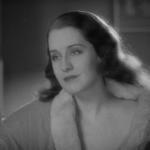 |
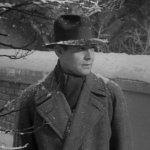 |
 |
| Nina Norma Shearer |
Ned Clark Gable |
Sam Alexander Kirkland |
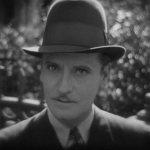 |
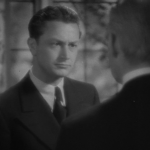 |
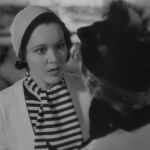 |
| Charlie Ralph Morgan |
Gordon Robert Young |
Madeline Maureen O’Sullivan |
| Released by MGM | Directed by Robert Z. Leonard |
||
Proof That It’s Pre-Code
- “Self important ass!”
- “I’ve been bad, Charlie. Wicked. I need to be punished. And you’re the only one who can punish me.”
- Nina is ordered by her mother-in-law to go out and pick out a healthy man to sire a child by (“Same as we do with [live]stock!”) and then pretend it’s her’s and her husband’s.
Strange Interlude: Say What?
“To kill happiness is a worse crime than taking a life.”
Following the evolution of sound through motion pictures is fascinating. Just like learning about crosscutting, fades, super impositions, and dozens of other visual editing techniques that were perfected in the decades of silent film, sound suffered its own evolution, not just in ability but in appropriateness. When does a voiceover work? When should background music be used– and at what volume/style/etc? The notion of sound attached to moving images is so ingrained in every modern viewer, it’s almost impossible to appreciate the steps and missteps involved, especially since its major growing pains were done in less than half a decade.
Strange Interlude is an interesting footnote in that history, an attempt to convert Eugene O’Neill’s clunky 4-hour play about infidelity and complicated personal lives into a sleek, star-studded two hour version. The play had an interesting gimmick: actors would break out of the scene and turn to the audience and express what they’re really thinking or feeling before snapping back into the drama. This could happen rapidly or rarely depending on the scene. For its filmic adaptation, director Robert Z. Leonard and the film’s writers decided to simply translate the characters’ feelings into voice overs, played while each actor is trying to conceal their thoughts under a silent veneer.
Does the gimmick work? In a word, no. The main issue with it is that cinema isn’t the theater– and the actors assembled are good enough to physically convey about 75% of the emotions expressed in asides without needing the breaks from the scene to reinforce it. It messes up the rhythm.
In the stage play, these asides are directed right at the audience, and the film does this as well but only once– the opening narration by Charlie sees him stare into the camera, and, for a brief second, it clicks perfectly. But the rest of the film we’re stuck watching actors forced to break their emotional beats up into long pauses, which is completely different than how pretty much anyone watches movies.
The constant narration breaks create a deadening sense of redundancy, and worse: it makes a chunk of the movie unintentionally funny, only magnified by its lavish devotion to the source material. Check out this meticulously stilted dialogue for example:
“Yes, he’s gone. My father who began me. He’s ended. Oh, don’t be frightened, Charlie. I’ve suddenly seen the lies in the sound’s cold words. Say lie, Charlie. Lie. Now say life. Life. You see, life is just one long drawn out lie. With a sniffing sigh at the end.”
As much as I love Norma Shearer, no one could sell that sparkling piece of whatever it is.
The repetition of emotions from both physical reactions and the asides often gives the movie the feeling that instead of brave innovation, the filmmakers are just afraid that the audience is too simple to understand nuance. But when the film drops the gimmick for long periods of time or at least occasionally utilizes it well (maybe it would have just worked better with a desperate Charlie simply narrating), things do take off.
The story follows a group of four people– I hesitate to call them friends– over the strange, sad course of their lives. Nina (Norma Shearer) loses the man she loves in the first World War. They never married or consummated their relationship because her father interfered, filling her with an eternal guilt. She’s also constantly pursued by her neighbor, Charlie (Ralph Morgan), a writer and eternal mama’s boy too meek to approach Nina but adamant she’ll someday come to him. She decides to become a nurse to help the war wounded, but trouble arises when she’s found spending time with the soldiers in ways that nurses do more often in the 1978 Night Nurse than in the 1931 Night Nurse, if you get my drift.
Her co-worker and personal doctor, Dr. Ned Darrell (Clark Gable), sees one solution to stop her from sleeping around and to fix the melancholy she feels after her father’s passing: she must marry kind, innocent Sam (Alexander Kirkland). This solution, though unconventional (especially since Nina and Darrell share sublimated sexual feelings), seems like a fair plan until Sam’s mother (May Robson) reveals a history of insanity in the family. If Nina has Sam’s child, the child rearing process will drive him mad and risk that her future child will also be a complete loon. But if she doesn’t provide Sam with a child, he may just go nuts anyway.
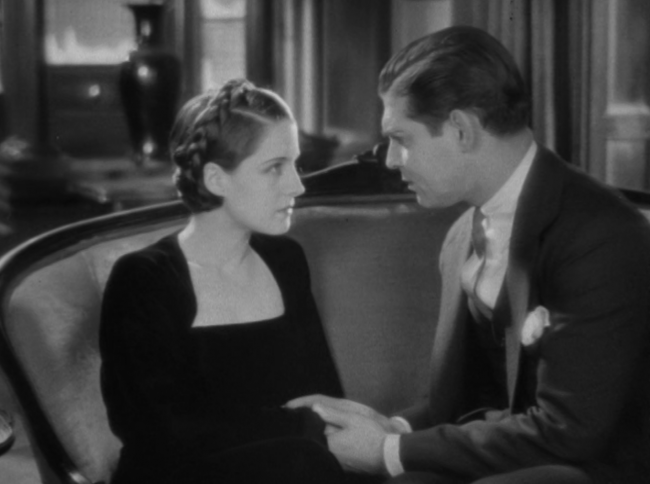
“The solution is boning. Hard boning. Crazy boning. A wild, carefree fuckfest is the only way to make everyone happy.”
There’s only one solution to this: Nina must have a kid, but it can’t be Sam’s. The best stud for this is Ned Darrell, but, unsurprisingly, you can never truly have scientific, non-emotional sex, and especially not with Clark Gable in 1932. The sex only confirms Nina and Ned’s passion for each other, but neither have the courage to confront Sam as neither wants to risk driving him insane. The years pass and their love remains a source of deep frustration as the group (including the ever persistent Charlie) grow rich and old. Nina’s son, Gordon (Tad Alexander and eventually Robert Young), grows up to loathe Ned and the way he looks at Nina, while Sam’s waistline grows and his greed deepens.
Strange Interlude lampoons the glorification of wealth and romantic love. Sam has a perfectly wonderful life with a wife who loves him and good friends at his side, as well as money, wealth, and a beautiful, smart son. Of course, this is all deceit: he never knows that his wife doesn’t love him, his friends resent him, and his son isn’t his own. That neither he nor Gordon ever discover this deception is the film’s button hook of irony. The actors in Sam’s life played their parts perfectly, and gave him all he wanted in spite of their own feelings and considerations, constantly manipulating each other into more and more precarious positions until they had no choices but to live shallow, empty lies. But there’s also more to it than that.
Spoilers.
The central emotional deceit of the movie doesn’t come from the tragic romance between Nina and Ned, but from from the rift that that creates between the two and their son, Gordon. He resents (and, in a Freudian sense, is probably quite jealous of) Ned and Nina’s relationship, and this drives a deep wedge between them. Gordon grows up idolizing his “father”, the greedy and buffoonish Sam, leaving him to lose his drive to be great and instead simply seeking to be one of the crowd, much the horror of his real parents.
The best and most emotional scenes are Ned and Nina dealing with this. Ned, because he can’t claim the child as his own and must suffer Gordon’s scorn, grows into a broken shell of a man. Gable, who’s usually known more for his sexual charisma than his acting ability, makes these scenes truly heart breaking. It helps that the film’s makeup effects are quite good (this is also apparently the first on-screen appearance of Gable’s mustache), making his transformation both visually and emotionally damaging.
Shearer is great, so much so that it’s hard to notice. She has to walk the fine line between sexual desire (not surprising for a pre-Code Shearer performance), motherly pride and hope, and a deep seated frustration of a life that she constantly feels was stolen from her. She can be catty and cruel, and the veneer of a long, painful life finally breaks when she meets Gordon’s fiance, Madeline (Maureen O’Sullivan). It’s a confirmation of her own mortality and the final nail in the coffin of her ever hoping to influence Gordon to take on a challenge and do good in the world rather than idly soak it up. These scenes of cagey desperation as Nina tries to manipulate the situation, including a final revelation of the truth, are handled beautifully.
In fact, the film’s moribund finale is its highlight, as all of the gears the characters have ground for decades finally give out and they’re only left with a hollow feeling of satisfaction, not from a life well-lived, but in the knowledge that they’ve done good for everyone but themselves.
End spoilers.
The narration is supposed to create a connection to the audience, allowing us ‘in’ on the private thoughts and motivations of the film’s characters, but it fails since it the actors aren’t allowed to reach through visually as well as audibly. Unfortunately, the way its been stripped down, nothing in the plot really needs the explaining. The gimmick frustrates rather than enhances.
You’ll probably notice, in spite of my complaining, I gave this one a like, because I do honestly find much of the film works in spite of the awkward voice overs. Shearer and Gable, as always, have sublime chemistry, and the story is wonderfully melancholy despite how hackneyed the setup. I always appreciate a movie that tries something different and ambitious and fails colorfully, and Strange Interlude is undeniably that in spades.
Gallery
Hover over for controls.
Trivia & Links
- Parodied in other pre-Code films Animal Crackers, So This is Africa and Me and My Gal.
- The play was also adapted in 1988 for The American Playhouse. That version runs three hours and features Glenda Jackson and David Dukes.
- Stills and pictures over at Doctor Macro.
- David Bordwell credits the film with its innovative use of narration as being the first time it’s attempted on screen.
- Strange Interlude was produced as a ‘prestige’ picture, and, unsurprisingly, was difficult to market. TCMDB has more background on the play itself.
Strange Interlude (1932) was a commercially risky venture, the story of neurotic Nina Leeds, whose first love is killed in World War I. She copes with her grief by marrying, but her husband’s impotence drives her into the arms of a doctor, and she bears his child. The play ran nearly five hours on the stage, following the life of Nina from age 18 into her sixties. The screenwriters were forced to compress the mammoth work into a 110-minute film. O’Neill used an unusual device to express the characters’ inner thoughts – he had them pause mid-scene, and speak their thoughts in asides to the audience. It may have worked onstage, but it would never work onscreen. In the film version, the characters’ thoughts were spoken in voiceover, and the actors’ faces were supposed to telegraph their thoughts. However, the film was made only a few years after the end of the silent era, and many of the actors used silent film acting techniques to telegraph emotions – a method that was already looking dated then, and even more so today.
Still, there are compensations – and surprises. Shearer threw herself into the role, working intensely to catch every nuance of her character’s feelings. For one simple scene where she greets her lover in front of her husband, director Leonard was satisfied after the second take. Not Norma – she asked for twenty additional takes before she felt she’d gotten it. The reviews she received were among her best.
- I think I’m pretty safe in saying that Strange Interlude‘s reputation today is “widely detested.” Dear Mr. Gable notes:
Clark doesn’t have a lot to do other than pine for Norma and look like a wounded puppy. He is wearing far too much makeup right from the beginning and as the story goes on, he is supposed to age. This is indicated at first by the presence of a pencil thin mustache–the very first mustache Clark had onscreen, although it was a fake one!–and then later as he is made up to look like Colonel Sanders with fluffy white eyebrows and drawn-on wrinkles. Clark didn’t really age well, but at least he didn’t age like that!
- Stars in Heaven sums up their distaste even more quickly:
I watched Strange Interlude so you don’t have to.
Harsh words for a glossy, high-end 1932 MGM movie, perhaps, but the experimentation in Strange Interlude not only doesn’t work, it makes for a downright unpleasant movie watching experience.
Awards, Accolades & Availability
- This film is available on Amazon and Warner Archive.
Comment below or join our email subscription list on the sidebar! |
||
 |
 |
 |
 |
 |
|

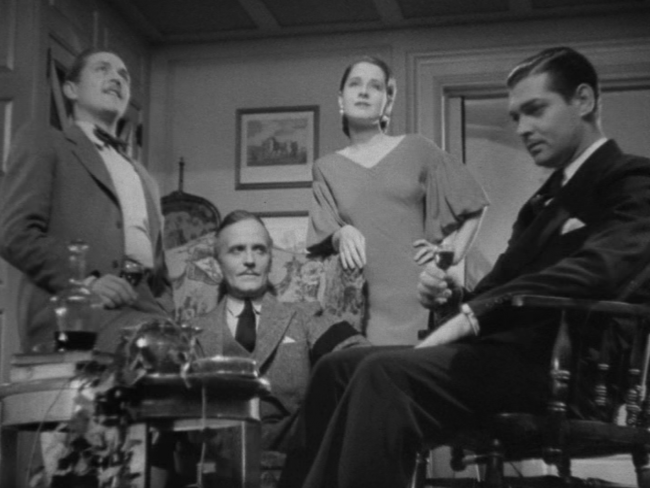
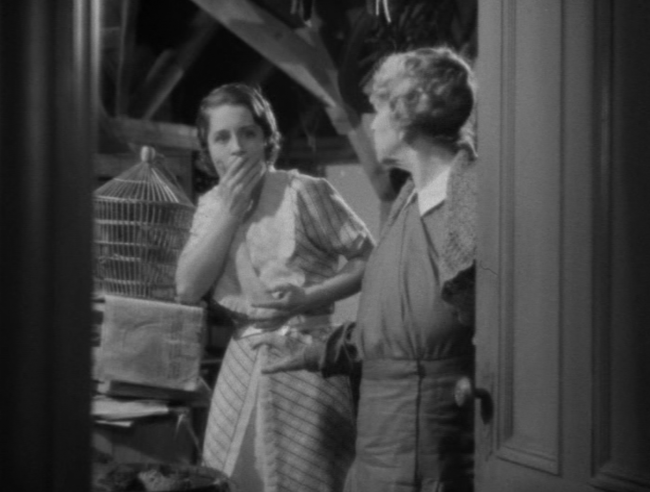
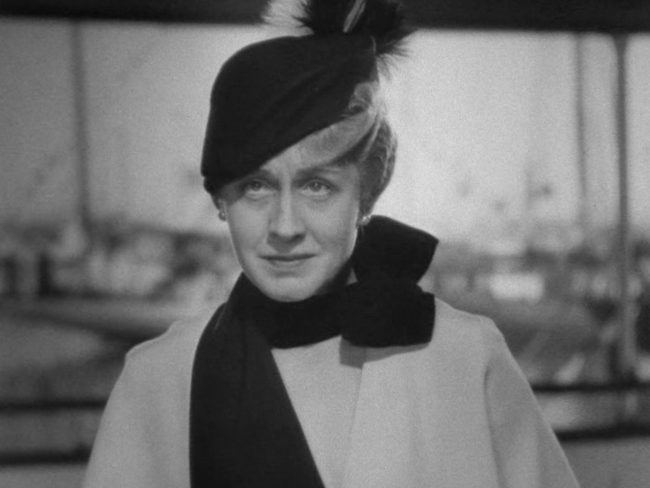
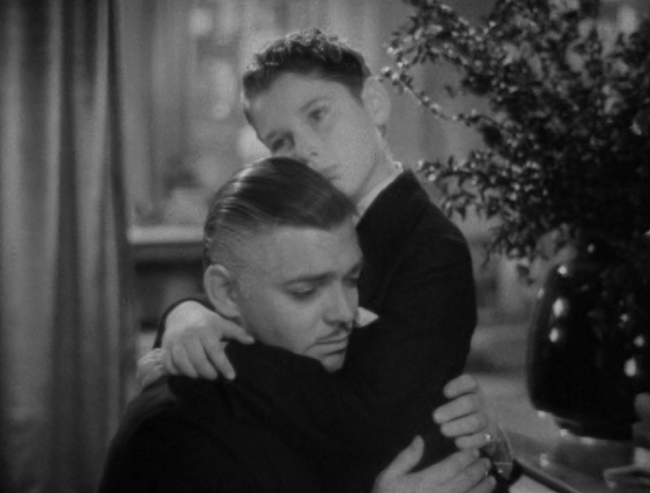
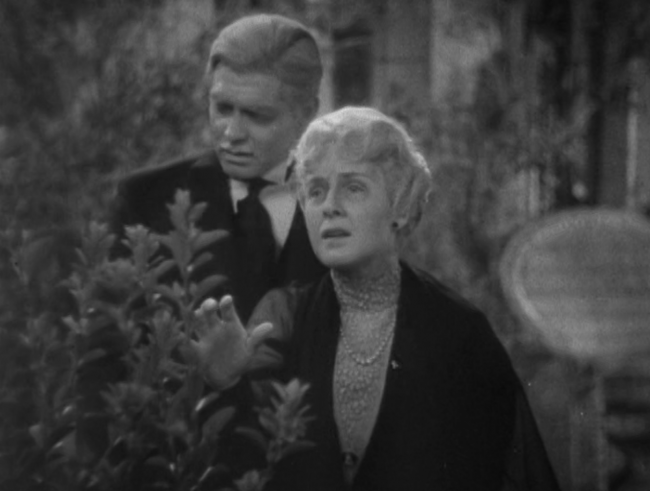



7 Comments
shadowsandsatin · April 6, 2015 at 11:30 am
I really enjoyed this review, Danny — I’ve only seen Strange Interlude once, and after getting used to the voiceovers, I actually enjoyed it. (So much so that I bought a copy of it last year because I wanted to watch it again and my VHS copy had bitten the proverbial dust.) I haven’t watched it since I purchased it, but after reading your write-up, I’m going to make it a point to do so. I’d recommend that anyone who doesn’t like it give it another look — once you get past wanting to laugh, and really get into the story and the performances, it’s quite good, I think.
Danny · April 14, 2015 at 9:11 am
It’s rough. I really wish there was a way to *fix* the movie, because that ‘breaking the fourth wall’ beyond just the voiceover would add both momentum and drama to a picture that feels stilted all too often. But, like with Story of Temple Drake, while what we get is watered down from the original, they do the best they could do with the techniques and beliefs they had at the time. I really like it for what it tries, and by the end the story really grabbed me.
Dave L · November 16, 2015 at 2:54 pm
Certainly Irving Thalberg knew that adding Gable to the project would provide added box office insurance to a risky project, but it should not be supposed that Gable was pressured into it. From the first he was a fearless actor, and always wanted a challenge. Any chance to show he was capable well beyond a gangster or beefcake was welcomed, and a Broadway success with a O’Neill pedigree was catnip. No one would argue it’s his best work, but it’s a disciplined and sincere effort.
Danny · January 8, 2016 at 12:56 am
I agree. I think he’s quite powerful in the film, which is not something I expected from him in the slightest.
Michelle Braverman · August 29, 2017 at 12:49 pm
A very good review and look at the film through today’s eyes. I personally found the ageing makeup on the principals a little distracting, probably because I recall how they aged in reality. And not for a minute did I think Nina was anything but fragile to be kind, off her rocker to be blunt, a woman who would be nothing but trouble. Easy to see how her beauty and charm would drive men to distraction, but I don’t think the film addressed those issues. Damn great role for Norma Shearer.
Dagmar Godowsky · November 29, 2020 at 7:57 pm
Just watched it again on TCM today. Although I liked it originally when I first saw it, each subsequent viewing had caused me to like it less. Today I found the horrible makeup and wigs terribly distracting, particularly on Clark Gable. Shearer fared a bit better but I find it annoying how actresses were usually shown to be young and pretty before marriage and children, and then shown to be about 20 years older after 10 years. When her son appears to be 10, she looks about 50 instead of 30ish. And when her son is about 25, she looks close to 90. The character would not have been older than 50 at the end of the film but she’s made to look like Robert Young’s great grandmother and Clark Gable has that awfully funny pompadour wig stuck on top of his head with visible lines showing where his real hair was. With higher resolution on our televisions, all these flaws just hit you in the face and distract. Thankfully, Frank Morgan comes through unscathed on all fronts, which was a relief for me.
david rosenberg · January 24, 2021 at 10:31 pm
Re Strange Interlude: You wrote, “Eugene O’Neill’s clunky 4-hour play”. I’m sorry, it is riveting still, which is why it won the Pulitzer and ran on Broadway for so long. It was 5 hours, starting at 5:30 in early evening, and including a dinner break. Is it too hard to imagine that audiences were excited to devote a rich evening to great drama? This was 1928, and barely ten years later, in 1938, Thornton Wilder’s lengthy “Our Town” also won the Pulitzer with even more elaborate asides/soliloquies. You may be too young to realize America once had world-famous playwrights. Alas, revivals of these plays cut them down, so it’s best to buy a copy of them in book form and actually read (if anyone still has time for that). Of course, you are reacting to the terribly cut film—but, and I don’t mean to be critical, just helpful—watching it today offers two great and rare experiences. First, it allows you to imagine yourself in 1932, when sound still seemed a marvel, so that you’d have more patience for inventive techniques like voiceover. It’s a shame that other commenters here come off as annoyed by innovation, failing to transport themselves back in time. Back in 1932 you would have known it was based on a great play of 5 hours length, so that the voiceovers seem to slow the drama down and approximate the longer original. Further, the aging of the characters is not meant to be purely verisimilitude, it’s theatrical. Is it too hard to imagine oneself into the drama? (If so, consider how much we’ve lost in terms of great theater and films, wanting instead instant gratification). And second, there’s another dimension of cultural depth to broaden the mind: back in both 1928 and 1932, radio was a parallel “new media” to sound film. Radio dramas of the time were full of inventive techniques, especially asides and stream of consciousness, so audiences could be moved to see them familiarly transferred to film. Finally, thanks to our recent innovation(!) of the TCM channel, we can be transported in time, something future generations will wonder why that was so big a deal (if they fail to imagine themselves back into 2021).
Comments are closed.